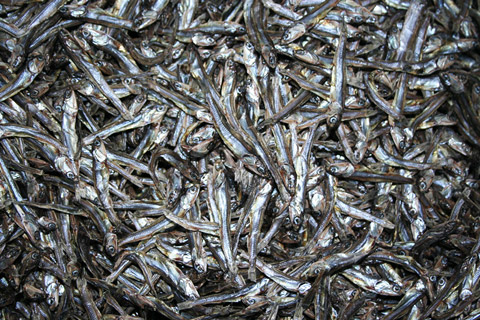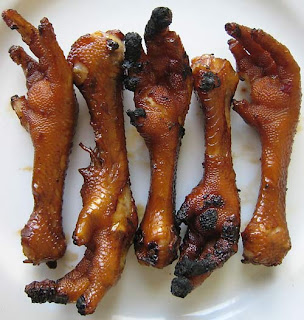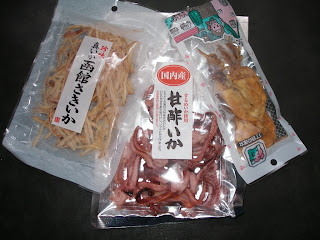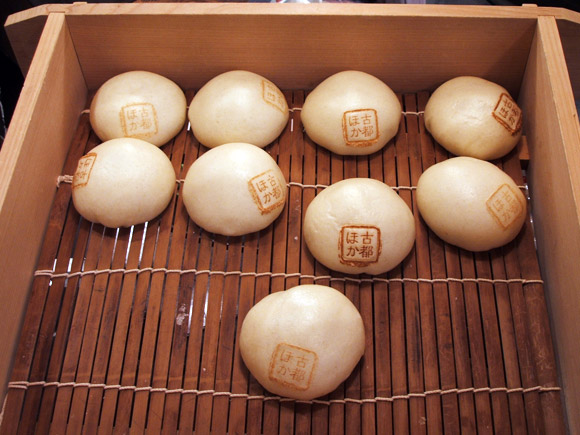Shopping for Japanese New Year’s Celebration Food at Nishiki Market in Kyoto

The New Year’s celebration, in Japanese, Oshogatsu (ã�Šæ£æœˆ) is the most important celebration of the year, like that of Christmas in Western countries.
The food eaten at Oshogatsu are many and varied. There are numerous traditional dishes that are only eaten at New Year’s, and it is also now common to purchase the highest quality fish, beef and poultry for family feasts.
I went to Nishiki Market this afternoon to do some of my own shopping and to snap some photos for KyotoFoodie.
Nishiki Market cannot be beaten for shopping for Oshogatsu feasts, it not only has everything, it also has the best. And the delicacies are priced accordingly!
Oshogatsu Shopping Crowd in Nishiki
Nishiki Market is just a narrow shopping arcade street, normally it is literally wall to wall people. On the last days of the year, it is even far more so. The crush of the crowd not unlike the rush hour trains of Tokyo and Osaka!
All kinds of fish for sale!

herring (nishin), herring-kombu roll (nishin-kombu maki), yellowtail (buri), Spanish mackerel (sawara)
New Year’s decorations for sale.
This temporary stand was set-up on a side street.
New Year’s Flower Arrangements

Shinise invariably have oshogatsu flower arrangements in and about the store.
Nishiki Tea Shop with Nishiki Bancha

Bancha is the popular ‘everyday tea’ in Kyoto.
Various Teas for Sale, Roaster in the Background

The roaster produces bancha, and plenty of rich, aromatic smoke.
Roaster Detail

Roasted tea leaves spill out into the container on the floor.
Customers Sampling Kyoto White Miso
White miso is sweet and is the most ‘Kyoto’ miso. It contains very little salt — and quite a few calories!
Sozaiya-san

This shop sells various ippin ryori type dishes, think of it as a Japanese deli.
Sozaiya-san

Scooping up goodies!
Osechi-ryori for Take Away

The boxes seen and beautifully wrapped contain the osechi-ryori for one person’s oshogatsu. These are for sale, or perhaps pick-up for orders.
Dried Persimmons

Tanaka, Wagashi Shinese

Mochi (rice cakes). Mochi is a necessity for Oshogatsu and often handmade by families or neighborhoods.
Bodara – Oshogatsu Cod

Bodara (棒ã� ら), cod simmered in shoyu, mirin and sugar. This is a shogatsu staple. On the bottom left are sweetened black beans with candied chestnuts.
More Oshogatsu Osechi Fixins

In the center are candied kumquats — candied WITH the leaves still attached. I had never seen them with the leaves still attached. This is the kind of thing that makes Nishiki Market a cut above the super markets.
Another Busy Fishmonger

This shop had lots of crab for sale. Japanese love crab, especially in the winter.
Tsukemono Shop

Japanese LOVE tsukemono (pickles)!
A Well Loved Grilled Fish Shop

At oshogatsu everyone wants to eat snapper (tai), so this shop changes it’s offerings to only salt grilled snapper (tai no shioyaki). Prices are steep!
10,000 Yen Snapper!

Priced from about $50 to $100+, think of tai as the Christmas goose of the Japanese New Year’s celebration.
Cooking and Selling Snapper

The men in the background are tending the ovens.
Fugu (Pufferfish) Specialty Shop

This shop specializes in fresh fugu, another popular Oshogatsu feast. A very special treat.
Fugu, Fugu and More Fugu

On the left is chunks of fugu with large, heavy bones intact for nabe (hotpot). I always think of this as being like whole chopped chicken soup in Chinese cuisine, the meat is nibbled off the bone which is discarded on a plate. Next is paper thin sliced fugu for tessa, fugu sashimi. Next, fugu no shirako, this is the sperm sac of the male fugu. Thinly sliced fugu skin, called teppi on the lower right.
Fugu, Fugu and More Fugu

Fugu, Fugu and More Fugu

Fugu no shirako, this can be eaten raw, steamed or lightly grilled. Again, it is the sperm sac of thefugu, you might want to give it a miss, although if you had it and did not know what you were eating, I bet that you would like it!
A Popular Mochi Shop with Popular Oshogatsu Mochi Flavors
On the left is the No. 1 ninki (popular) mochi, mame mochi (mochi with black beans), and No. 2 ninkiis yomogi mochi, it is green because it is made with the mugwort (yomogi) plant. Yomogi mochi is slightly astringent with a feel something like mint. Next, to the right, the yellowish colored mochi isawa mochi, awa is one of several kinds of millet that was eaten in ancient times. Now it is mostly used in confections and mochi.
Various Kinds of Mochi

The pink mochi is ebi mochi, shrimp mochi. Baby dried shrimp are added to the mochi. These ‘loafs’ of mochi are sliced and usually roasted and eaten with shoyu and sometimes a bit of sugar. The bags of round mochi to the right is for ozoni soup.
TORO!

Honmaguro chutoro is wild maguro (tuna). Chutoro (middle toro) is the cut between the red meatmaguro of the back and the fatty ‘pork belly’ bottom called ootoro. The prices are around $70 for a block of toro. While that is not cheap it can provide 4 or 5 people with a generous amount of toro to go with a New Year’s family feast.
Dried Cod

This dried cod is that is reconstituted and simmered with sweetened shoyu to make bodara, anoshogatsu staple.
Chinmi – Namazu Kabayaki (Catfish)

Chinmi, literally ‘delicacy’ is especially popular with drinkers in Japan (who are not on a tight budget). This item was labeled at ‘chinmi‘, it is broiled catfish (namazu). I have never seen catfish for sale in Japan before. Catfish are regarded as an indicator of a coming earthquake, rather than food in Japan. This shop specializes in fish from Lake Biwa.
Red Snapper Heads for Sale

The head of the tai are popular for making tai no ara, a nimono (simmered dish) ever popular with the Japanese. The slowly simmered tai head is carefully picked apart and the sweetest meat of the fish is teased out with chopsticks. Tai no ara is simmered with shoyu, sake, mirin, shredded ginger and sometimes gobo.
Fugu

Notice how rotund the fugu is. When fugu is written with the Chinese kanji characters, it is usually written as ‘河豚’. æ²³ is ‘river’ and 豚 is ‘pig’.
Dashimaki-tamago, Serious Business at Oshogatsu
Notice the sign with the number 2 on it. This shop is so busy that customers have to get a number and reservation at a different location and come to pickup their dashimaki at a set time, in order to lessen the chaos.
Tanaka Keiran (Tanaka Chicken Egg Shop)

The stacks in the background at the center of the photo are wooden forms that the dashimaki is put in and takes it’s rectangular shape as it cools down.
Making Dashimaki

Making Dashimaki — Frantically

Making Dashimaki

Miki Keiren — The Most Famous Dashimaki Shop in Nishiki
Miki Keiren is insanely busy. The sign at the upper center shows where to go to get a number and reservation for a New Year’s dashimaki.
Side Street with People Queuing for Miki Keiren Dashimaki Reservations
Queuing for Miki Keiren

Mishimatei in Daimaru Department Store

Right around the corner from the west end of Nishiki is Daimaru Department Store which is also an excellent place to buy tasty things. Here, the man holding the sign shows where the end of the line currently is for people waiting to buy their Mishima-tei fine beef for Oshogatsu dinner. I took this photo about 4:30pm when they were nearly sold out and therefore the line was short. On the 30th and up until early afternoon on the 31st, the line would be hundreds of people long, taking hours buy some Mishima-tei beef, which many people are perfectly willing to do.
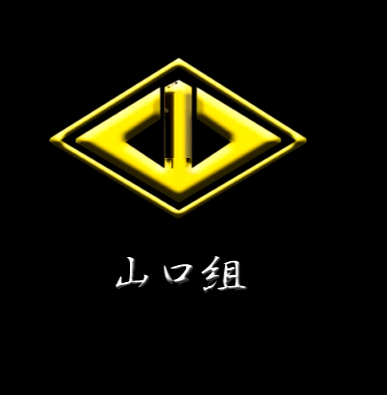

















 source
source























